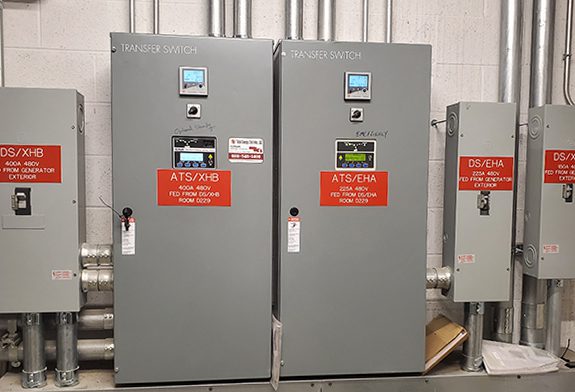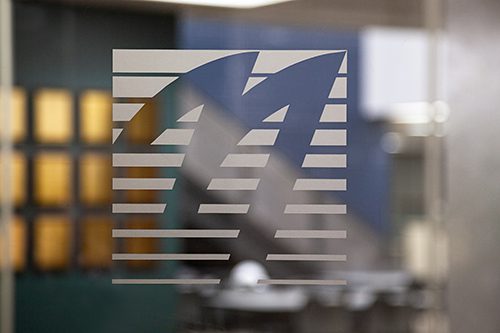Do your critical-use buildings have their transfer switch settings optimized? Critical-use buildings—such as hospitals, data centers, prisons, laboratories, and buildings that house industrial processes—utilize generators for backup power. Transfer switches are a typical component of back-up power systems. The job of the transfer switch is to transfer the power load from the utility power source to the back-up power source. Transfer switches can be manual or automatic.
Many critical-use buildings do not have their transfer switch settings optimized for ideal operation. But optimization is important. Without it, a generator may not start as quickly as you need it to, or it may run more often than necessary. Both issues can cause operational problems. In some cases, lack of optimization can create additional costs associated with unnecessary fuel use and equipment wear and tear.
Many factors contribute to a well-functioning emergency/standby generator system. Here, we’ll focus specifically on automatic transfer switch (ATS) settings. The multitude of settings on ATSs correlate to how building power will transfer to a generator in various building scenarios. This blog reviews the most used options, including what they are and why they’re important.
Consider a scenario where utility power is lost at a building, and the ATS sends a start signal to the generator. The generator starts, and when the ATS senses that the generator is ready to carry the building load, the ATS transfers the building power to the generator. Once utility power is restored, the ATS transfers the building load back to the utility, and the generator shuts down. The entire process is regulated by settings in the ATS. These settings define how the building will react to a loss of utility power and how long each step of the transfer process takes.
Your understanding of your building’s uses, and where power is critical, will help you determine how to apply each of the possible ATS settings for maximum efficiency and reliability. Let’s take a closer look.
Settings for Transfer to Emergency Power
Engine start delay: This is a timing setting to delay the start of the generator. Intuitively, you may think you should start your generator as quickly as possible, but there are several reasons you might want to delay. It may be beneficial to allow large HVAC equipment to slow down or stop before energizing it again. This reduces wear on the moving parts. Another reason could be to give the utility a chance to restore power if the outage duration might be very short. For example, adjusting the delay setting could allow your system to ride through a utility outage of one second without transferring power to the generator, thus reducing wear on the generator without meaningfully impacting building operations.
Note that where the generator and ATS are used for life safety loads, codes mandate that the generator be carrying those loads within 10 seconds or less.
Transfer to emergency: This is the time delay between when your generator is ready to carry the building load and when the transfer switch actually transfers power to the generator. This is generally set to 0 seconds so the generator starts supplying power to the building as soon as it’s capable of doing so.
Undervoltage/Overvoltage: The local electrical utility supplies voltage to your facility. Though we often talk about voltage in terms that imply consistency, in fact, the voltage supplied to buildings is not constant. ANSI Standard C84.1 mandates the range of allowable voltages for utilities to supply to buildings. (ANSI is the American National Standards Institute.)
The ATS settings for undervoltage and overvoltage allow the building owner to determine whether the generator should supply power if the utility voltage falls outside a specific range. For example, sensitive electronics in telecom facilities do not like big voltage changes. In such facilities, it may make sense to specify a narrower range of allowable voltages than in other types of buildings. The undervoltage/overvoltage setting is particularly important for areas where brownouts or power quality issues occur frequently; an intelligent strategy will allow the generator to minimize disruptions caused by equipment failures during brownout conditions.
Underfrequency/Overfrequency: Frequency in the US is supplied at 60Hz, and, like voltage, it fluctuates as power is delivered to each building. Setting the range of allowable frequencies protects sensitive electrical equipment in the same way that setting the range of allowable voltages does.
Settings for Transfer to Utility Power
Emergency fail: This is a time delay setting that addresses what happens if your generator fails. If your generator fails while it is supplying building power, you can transfer back to the viable utility source. The emergency fail time delay is often set to 0 seconds so that your building will transfer to the utility immediately if utility power is available when the generator fails.
Engine run timer/Retransfer back to normal: This timer dictates how long the generator will run before transferring back to utility power after the ATS senses that utility power is available. Depending on the reliability of power in your area, some utilities experience issues where power is restored briefly and then lost again. Another scenario is a brownout power outage. In a brownout, power is not lost, but voltage is reduced. Reduced voltage can cause equipment in the building to stop operating and/or fail. Delaying the transfer to the utility may prevent sensitive components from being damaged by recurring utility issues and can help your building ride through these types of outages.
Other Settings
Engine cool down: Generators need a cool-down period at the end of running. During this phase, the generator runs without load before completely shutting down. The manufacturer will recommend an appropriate cool-down time. This can be programmed at the ATS or at the generator, in most cases.
Exercise timer: The exercise timer allows you to set a day and time for the generator to automatically start up. Code requires emergency generators to run monthly, and all generators benefit from being operated regularly. The generator can run with or without building load. However, running a diesel generator without building load may create other issues, including a condition called “wet stacking.” Wet stacking results when a diesel engine operates but doesn’t get hot enough to burn all the components of the fuel, allowing residue to stick to parts of the inside of the engine and exhaust system. It’s a good idea to review your diesel generator testing procedures to avoid wet stacking.
Summary
Deciding the best way to program your automatic transfer switch settings can be a complex endeavor. Our team at GBA is available to help. Contact our electrical system experts for advice.
Author: Karen Long, PE, Associate Vice President, GBA Wisconsin



